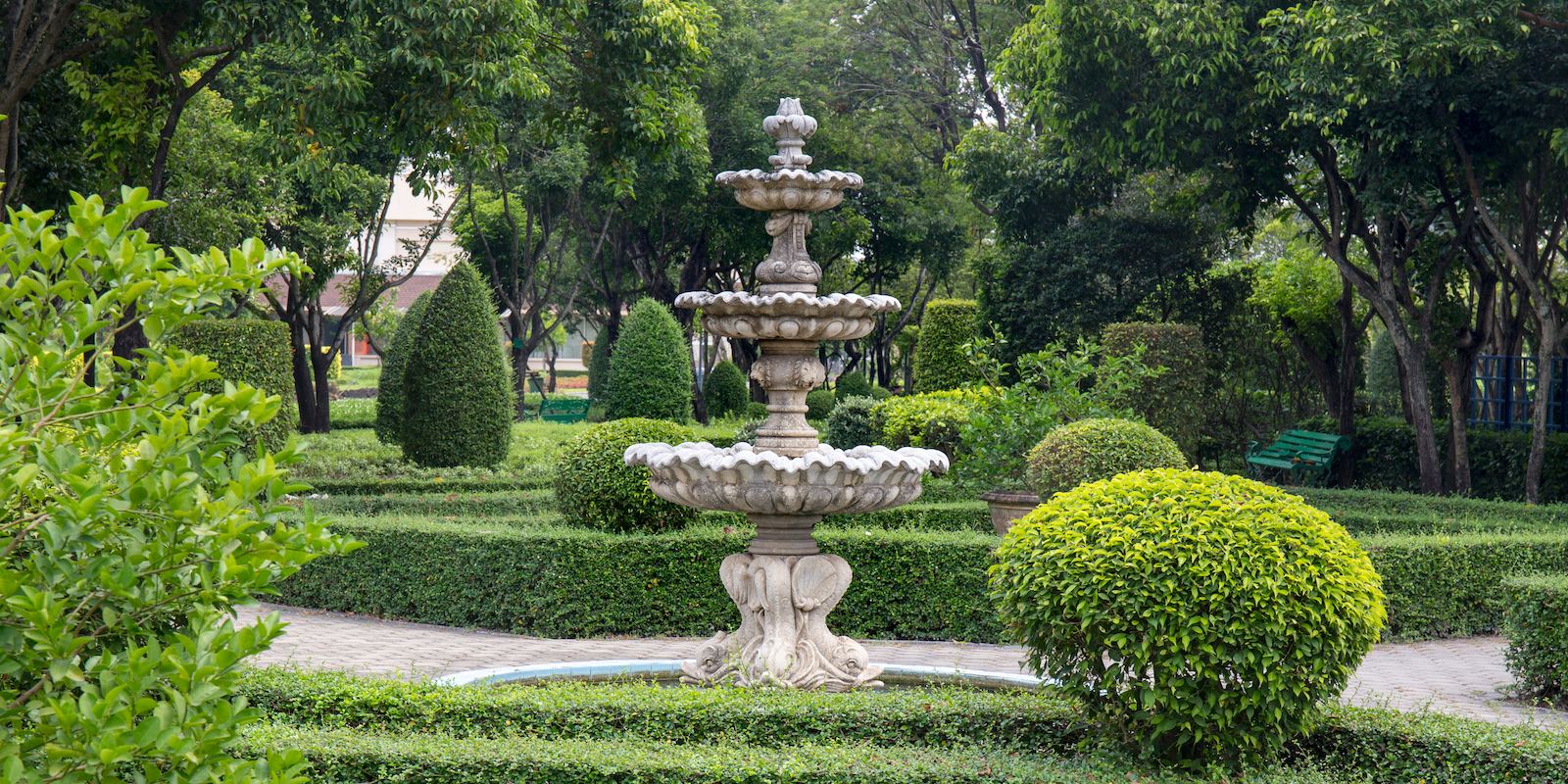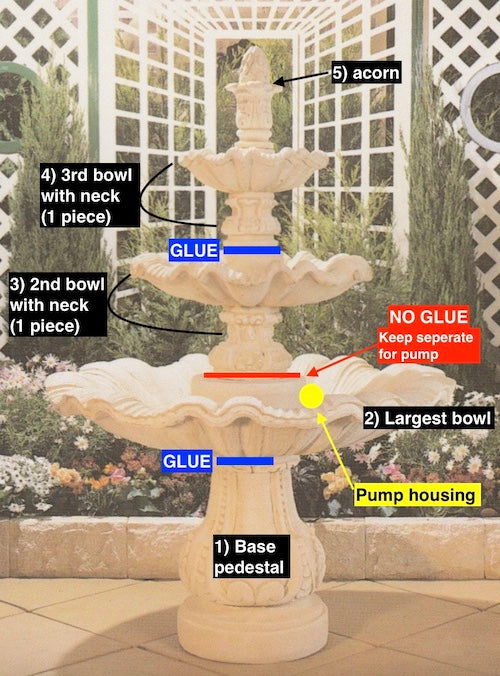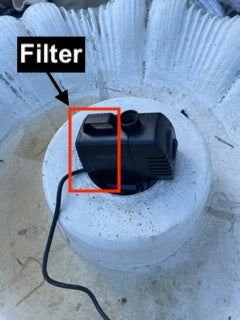Call Us On
03 7046 5568
Mon-Fri 9AM-5PM

Thanks for purchasing one of our concrete fountains. Now it's time to set it up so you can sit back and enjoy the majestic sight and sounds of gentle water trickling along your new spectacle.
Here's a guide to help you put together your water fountain and garden pond.
If you're using a pond:
The concrete fountain must be placed on a flat, sturdy, level surface and not on grass. Over time, grass can settle, and the ground may become unstable. There are 3 choices: hard soil, concrete pavers, and concrete floor.
You will need to take the following steps to prepare the ground:
Clear away any grass and excess soil around the area you would like to place the fountain. Consider the entire region, including the size of the pond, if you're adding a pond.
To create a level surface, use a flat spade to spread the soil evenly from higher to lower areas, compacting it until the entire area is flat.
This step is optional. You may place concrete pavers around the area, which any purchase from any good hardware store. Or you can pour cement over the entire region.

Before erecting your fountain, we recommend you test the pump and hose first to get a feel for its operation.
If you've purchased a fibreglass liner, now is the time to put that over the soil/concrete. The fibreglass liner also acts as a floor support and a template to guide the pond pieces together to form the pond.
There is concern over the visual appearance of the liner being shorter in height than the pond. It's not a problem as the fibreglass liner is not so visible when looking at a distance at a pond filled with water.
To house the pump, you'll need to place two supporting blocks below the fountain's pedestal of about 20cm in height. We recommend 20cm in height to cover the height of the pump. There are a few reasons for this:

To demonstrate, we'll be setting up the Catalina 3-Tier Concrete Fountain.
It's best to wait a day for the pedestal and first bowl to set before continuing with the remainder of the fountain the next day. You may also structure this in two parts, morning and late afternoon. However, we advise splitting the work into two days for colder days.
If you're using a pond, please ensure you've placed the fibreglass liner onto the ground before proceeding.
Notes:
Note if using a pond: At this stage, feed the tubing through the pump housing to the pedestal base. Then connect the tubing to the pump and let the pump sit on the pond liner near the pedestal.
This section is only applicable if you're not using a pond. In this case, the pump sits in the pump housing at the first bowl.

Pictured above is the "pump housing". There is a plastic-like bottom, and you'll need to drill a hole in its centre. There may be some concrete at the back of the plastic. It's OK to drill through that concrete.
Note: If you've ordered a pond, the pump housing will be pre-drilled.
Please remove the pump's filter; otherwise, the pump will not fit inside the pump housing.

Note: If you use a pond, the pump sits inside the pond, and you don't have to remove the filter as there is ample room within the pond.
You may let the pump's cord overhang the largest bowl. Or, if you prefer a cleaner look to hide the wiring, you can do the following:
Internally, all our concrete fountains have a cylindrical centre that extends vertically from the tip to bottom pedestal for the wiring/tubing to pass through.
Note: It's essential not to glue the second bowl onto the first, as you will need to lift the second bowl from time to time to access the pump.
Repeat the previous steps as required for water features with four or more tiers.

After you've erected the water feature onto the pond liner, it's now time to cement the concrete pond pieces together.
The fibreglass liner acts as the template to guide the pond pieces. If you're not using a pond liner, ensure you measure appropriately to place the pond together in a circular manner.
Ensure you leave enough time for the mortar and cement solutions to dry.
Congratulations, you have successfully set up your concrete water fountain! We would appreciate it if you took some pictures and sent them to us at hello@fountainland.com.au to see how you've done.
Can I drill a hole into the pond liner?
No. We recommend you don't do this to avoid damaging the liner's integrity. It's also difficult to seal the liner afterwards.
How often do I need to refill the water for my fountain?
Large water fountains, e.g. Catalina: summer at 4 times per week, winter 2 times per week. If using a pond: summer 2 times per week, winter 3 times per week.
Extra large concrete fountains, e.g. Frangelico: 3 times per week
Should I buy the most powerful pond pump possible?
Water usually trickles at the fountain's peak. If the pump is too powerful, water may not land properly from the fountain's peak to its top bowl. So it's not necessary to have more power. More power is needed if you're using a pond, as the water flow starts from a lower base.